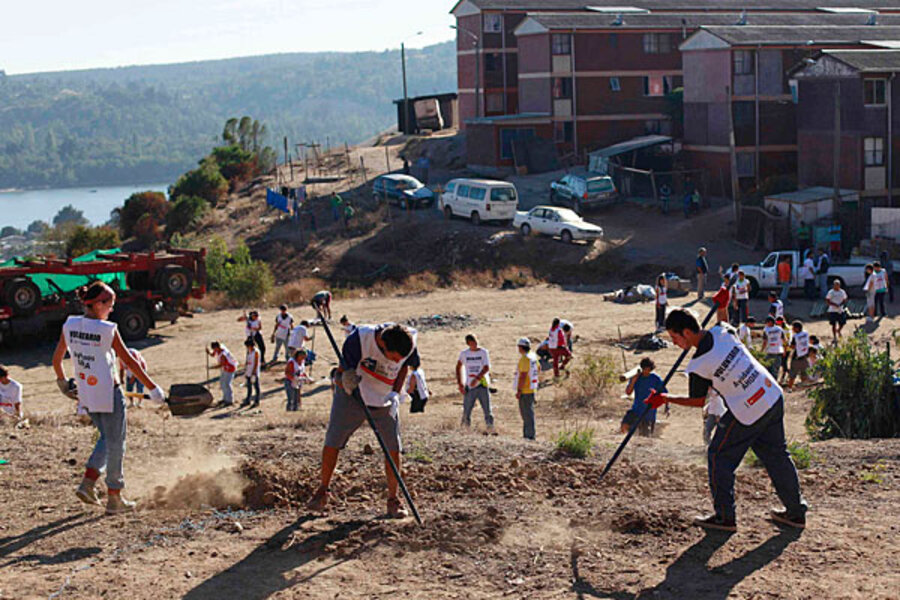Confusion over Chile earthquake death toll sparks frustration
Loading...
| Mexico City
Modern society generally wants answers, now. Diagnose the problem, fix it. But confusion over Chile’s death toll shows the pitfalls of trying to relay the scope of a tragedy before being ready.
On Feb. 27, the day the 8.8 magnitude earthquake struck Chile, the death toll was placed at 214. Even though officials said they expected it to rise, the nation was shocked when 24 hours later, it had risen to more than 700. Throughout the week the numbers crept up slowly, to 802 officially dead. By yesterday evening, officials sharply reduced that number, to 279.
IN PICTURES: Images from the magnitude-8.8 earthquake in Chile
So what is the death toll? Will it be miraculously low, given the fact that Chile just experienced one of the strongest earthquakes in a century? Or may it shoot up once again, perhaps even surpassing 802?
The answer is: we simply do not know.
The Chilean government was initially criticized for underestimating the extent of damage, and not warning residents of an impending tsunami. That, critics say, led to bad decisions about not accepting foreign aid immediately or sending in troops to quell reports of looting.
The confusion over the death toll, to some observers, is just another example of a tragedy being mishandled by the government.
“If they don’t know how many people have died, then they are not really in control of the situation,” says Patricio Navia, a Chilean columnist and professor at New York University.
For now, Chileans are not consoled by the lower numbers, because those could, any day, rise much higher. Part of the problem has apparently been that those missing, assumed dead, turned out to be alive. Officials said that they have only identified 279 bodies, but added that an unspecified number of bodies is not included in the newest tally.
The confusion is reminiscent of other crises. During the H1N1 scare in Mexico, the number of those reported as having the so-called “swine flu” was initially many times higher, because officials had included unconfirmed cases on the list.
The government in Mexico received criticism from business associations for radical moves that essentially shut down the capital for a week. But the response, which was a blow to the Mexican economy, was hailed in other parts of the world for being prudent at a time when the world did not know what it was facing with H1N1.
In Chile, the government will likely face more criticism for a new layer of confusion. In a blog posting on the Chilean newspaper site El Mercurio, the former head of the emergency response office Alberto Maturana called the numbers issue "a comedy of errors."
Still, many have written comments on the El Mercurio site urging Chileans to come together, not blame one another, especially as the tragedy is ongoing. Aftershocks continued to panic residents across the country, with one Friday registering 6.6.
IN PICTURES: Images from the magnitude-8.8 earthquake in Chile





